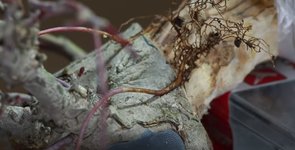treepirate
Sapling
I know we have had a number of threads on this but I wanted to see if we can puzzle this out.
If anyone has any new information or tried any new techniques then please feel free to post.
The oak we generally have in the UK is Quercus robur, the common or english oak.
A tricky creature to collect as yamadori, a fickle creature to repot and a tree that can take a couple of years to die after both events.
I know that the air layer technique with sphagnum will produce roots.
I've seen 5 inch trees be air layered with a good number of roots then just fade out once sepetated.
It often calluses up and needs recut.
The slow callusing and root growth will mean separation in the following year minimum as with some species like the hawthorn.
I'm thinking of a number of different things to try to overcome this.
If any one has tried any please post your results.
1- leaving the airlayer on for 3 years before separation.
2- leaving the airlayer on 2 years then repotting into akadama while still attached and leaving it on possibly another 1 or 2 year before separation.
If anyone has any new information or tried any new techniques then please feel free to post.
The oak we generally have in the UK is Quercus robur, the common or english oak.
A tricky creature to collect as yamadori, a fickle creature to repot and a tree that can take a couple of years to die after both events.
I know that the air layer technique with sphagnum will produce roots.
I've seen 5 inch trees be air layered with a good number of roots then just fade out once sepetated.
It often calluses up and needs recut.
The slow callusing and root growth will mean separation in the following year minimum as with some species like the hawthorn.
I'm thinking of a number of different things to try to overcome this.
If any one has tried any please post your results.
1- leaving the airlayer on for 3 years before separation.
2- leaving the airlayer on 2 years then repotting into akadama while still attached and leaving it on possibly another 1 or 2 year before separation.

